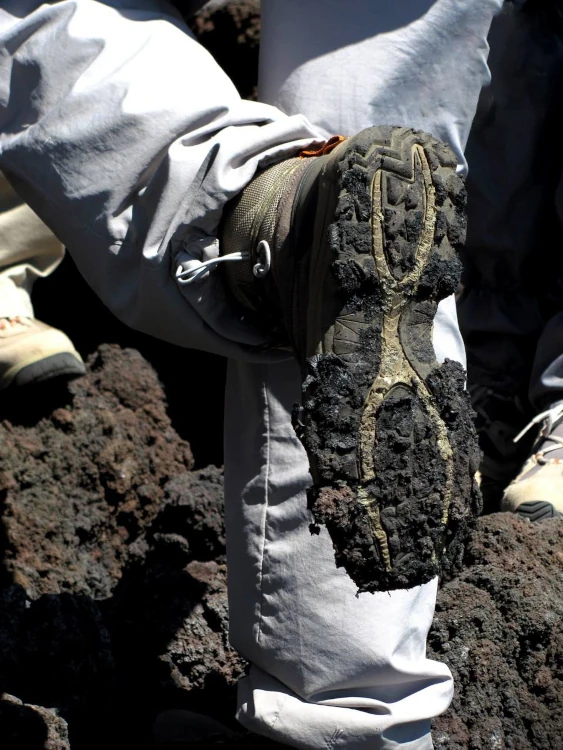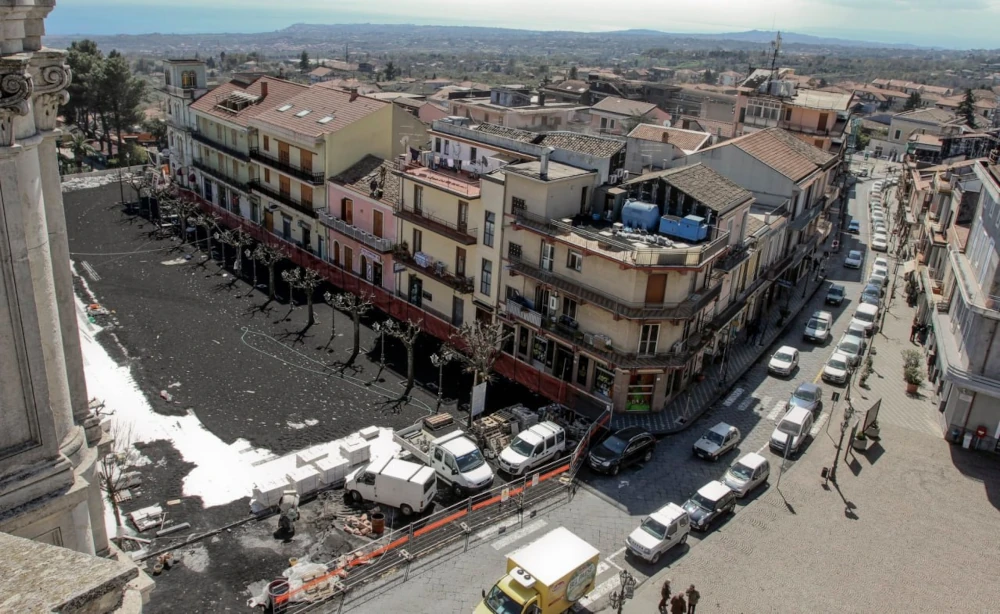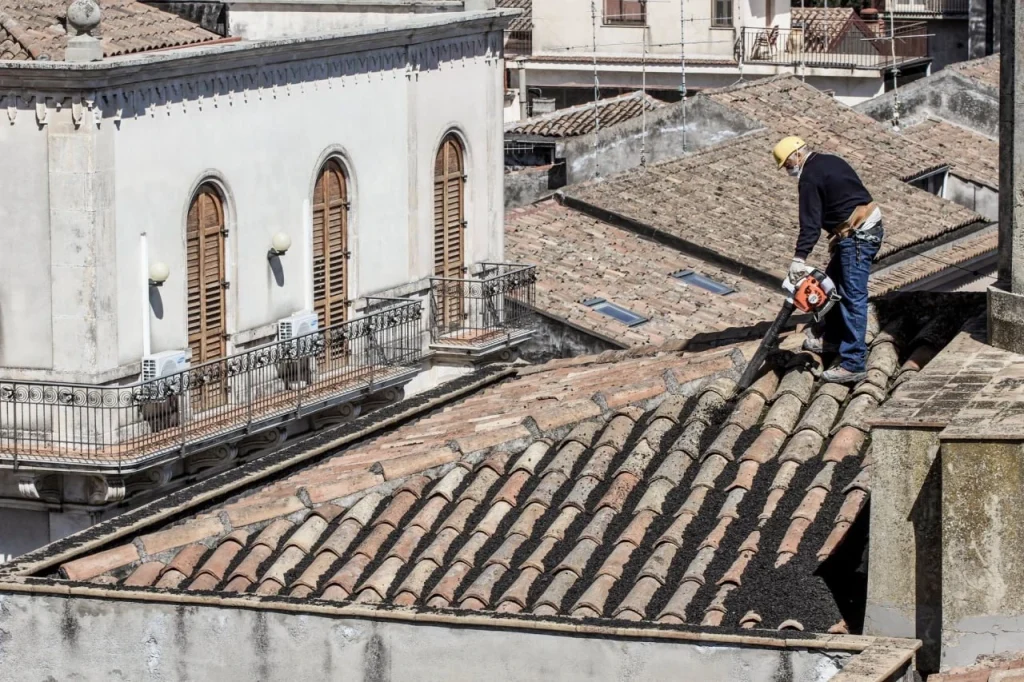I have been living in Sicily, in the province of Catania, at the foot of Mount Etna, for more than 40 years now. The volcano has characterised my life here from the very beginning. I will now tell you – from the perspective of an almost real Sicilian – about life in the shadow of the volcano, about life with Mamma Etna, as the Sicilians call their volcano.
Sicily as it used to be
When I first arrived here as a young girl, everything was strange and unfamiliar. Noisy people, colourful little buses driving through the streets selling practically everything from food to laundry and washing powder. When the small, fully loaded bus drove through the streets and announced its arrival with loud cries, the housewives rushed out to do their shopping. Everything was on offer: fresh vegetables, beautiful bright red tomatoes, delicious black and purple aubergines, all kinds of fruit, large plump yellow lemons, fragrant peaches, … The bus even carried dry lentils, peas and beans in white sacks.
After the women had thought about lunch and dinner, it was on to soap, detergent, brooms, buckets and then came the most entertaining moment. The good man had some fine embroidered bed linen for the brides-to-be! In Sicily, great value has always been placed on such special pieces. There was a lot of touching, evaluating and trading, all of which went on quite long and loudly.
Today this no longer exists, there are no street vendors with loudspeakers driving around. In the smaller villages, you can still see the Ape, the small three-wheeled vehicle, selling fruit and vegetables or fresh fish. There are still a few old men who cling to the past and sell underwear on their ape, but nobody buys their underwear on the street anymore.
Up close with Mount Etna
Back then, I was lucky enough not only to get to know Mount Etna for the first time, but to experience it. It was the beginning of September and there had been an eruption at the beginning of August. We had to see it up close. I well remember the stony black lava flow that crossed the road. A high smoking wall! We tried to climb up a bit in our sandals, but the soles of our shoes came off due to the heat. It was then that I realised that you have to respect the volcano.

Caution: Even if the lava is already solid and black, it is still very hot.
Over time, the volcano has often surprised me, not always in a positive way. It is beautiful when it erupts and throws red-hot lava into the air, but it is also frightening.
Life in the shadow of the volcano: ash, ash, ash
A large eruption is usually announced by rolling loud thunder, windows and doors rattle. You look outside and scan the sky for signs of an approaching storm. But if you look towards Mount Etna, you can see dark smoke rising from the volcano’s mouth until the time comes and the lava is blown up into the air. This is accompanied by ash and stones.
If we are lucky and there is no wind, everything falls down near the crater. Most of the time, however, a huge black cloud forms and is blown in different directions by the wind. Then a spontaneous prayer comes out of our mouths: please not in my direction!
Because if you’re unlucky, it rains ash and stones that cover everything in an instant. Streets, squares, roofs, balconies, everything is quickly covered in a thick grey layer. The green gardens turn black and the fine ash penetrates into houses and flats and settles everywhere.

White curtains turn grey and the floor and furniture look as if they haven’t been dusted for weeks. If you are travelling by car, you have to roll up all the windows quickly, otherwise you will inhale the fine ash. Sometimes the stones are so big that they leave dents on the car. It sounds like hail.
It often happens that Catania Airport has to be closed because the runways are covered in black or because it is too dangerous to fly through the ash clouds. Passengers are then sent to Palermo.

The 2002 eruption – the perfect eruption
I will never forget the autumn of 2002! The eruptions began in October, accompanied by huge amounts of ash. Until January 2003, we were only outside with face masks, caps and goggles. You could sweep every day without interruption. Bags full of ash piled up on every street and were collected by the local council. If it rained on top of that, it was a nightmare. In the evening, when you undressed, you had stones in your hair and even in your pants, despite all the protection.
It was an exhausting time, but despite everything it was accompanied by unique views of the volcano. It all began on 26 October, heralded by many earthquakes. A long fissure opened up on the north-eastern side of Mount Etna, from which large quantities of lava and huge amounts of ash and stones poured out. On 13 November, a new fissure opened on the south side and on 21 November a third new crater was created at 2750 metres.
You can read more about the course of this eruption here: Eruption of 2002 and 2003
It was the biggest eruption in the last 100 years, they call it the perfect eruption. It was a lot of work and trouble for us locals, but I had never experienced such a natural spectacle! When you drove on the motorway and looked towards Mount Etna, you had the feeling that the volcano was dissolving. Countless red, smoking rivers flowed over its slopes – never again have I seen so many at once! I could see Mount Etna from my bedroom and from my bed every night I admired the fiery explosions that coloured the sky red.
Impressive but also frightening pictures of the eruption of 2002 and 2003 can be seen in this documentary by the INGV: Documentary about the “Perfect Eruption” by the INGV (National Institute of Geophysics and Volcanology) on YouTube

Life in the shadow of the volcano also means constant destruction: in 2002, the tourist centre Etna North was completely destroyed by the lava flows. The new tourist centre Piano Provenzana, which you can see in the picture, was then rebuilt on the lava flows.
Unfortunately, I can no longer see Mount Etna today, as a chestnut tree has grown very tall and covers the view. But I look in its direction every day because I want to know whether it is puffing away peacefully or preparing for a major eruption.
Mount Etna is an important constant in our lives. We fear it, but at the same time we admire and love it.
Discover the 2002 eruption on our North Craters Tour:
- Hike along the lava flow of 2002.
- Ascent to the huge craters of 2002. From the crater rim we can see the enormous extent of the craters and lava flows.
- Lava flows from the eruptions of 1911 and 1923
- Black lava desert: ash, lava bombs, craters and lava flows as far as the eye can see.
- Equipped with helmets and torches, we discover a lava tunnel.



